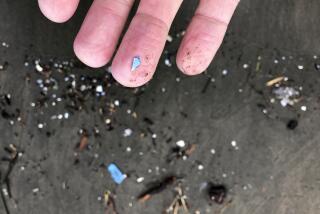BPA and health: What the science does and doesnât yet say

On Friday, the U.S. Food and Drug Administration rejected a petition from the Natural Resources Defense Council asking for a ban on the chemical bisphenol-A, or BPA, saying that scientific studies cited in the groupâs petition âfailed to provide sufficient data ⌠to revoke regulations permitting the use of BPA in food contact materials.â
BPA is a chemical that mimics estrogen in the body. It is often used to make and line food containers and can leach into food and, subsequently, be ingested into the body. BPA is also present on many types of cash register receipts, where it rubs off onto peopleâs hands.
Scientists are still working to ascertain exactly what effect BPA has on human health once ingested. They know that it is metabolized quickly and that it has been shown to have negative effects in mice, including developmental and reproductive abnormalities, precancerous changes in the prostate and breast, and other health problems. In epidemiological studies, researchers also have reported correlations between BPA levels in people and higher risk of ailments including cardiovascular disease, diabetes and liver problems.
For consumer advocates, concerns like these are enough to justify banning BPA. But the findings donât meet the scientific threshold that many regulatory bodies â including the FDA â require to remove the substance from use. Certain details of experiment design, as well as other factors, give regulators pause.
In a letter written to the Natural Resources Defense Council, acting FDA associate commissioner for policy and planning David H. Dorsey explained that the agency looks for studies to satisfy several scientific principles. For example, the FDA wants studiesâ dosing to reflect the amount of BPA a person might get through food and sample sizes to be large enough to provide confidence in results, he wrote.
The studies cited by the councilâs petition, he added, didnât make the cut.
One study cited was a review of previous studies written by urologists at the University of Illinois at Chicago in 2008. The paper argued that low-dose exposures to âenvironmental oestrogensâ promoted prostate disease with aging. But the FDA noted that one of the experiments cited in the letter administered too high a dose of BPA to its rats to be relevant to human health.
The FDA letter rejected another cited paper, published by Japanese biologists in 2008, because the research it described was conducted on bullfrog cells in a laboratory dish.
Fridayâs decision was not a final safety determination from the FDA, said spokesperson Douglas Karas, who added that the agency was working on a new, updated safety review that would âinclude all relevant studies and publications.â
Linda S. Birnbaum, director of the National Institute of Environmental Health Sciences of the National Institutes of Health, said that her agency was funding experiments to directly address questions people are raising, including: How much of a problem is it? and At what level?
âOur grantees have published nearly 100 papers since January 2010,â she said. âNothing has been published that says there isnât any problem here. On the other hand, there are still a lot of outstanding questions.â
For instance, she said, âwe want to have some surety that if BPA is removed from products, that what is put in its place is not a problem as well. â







